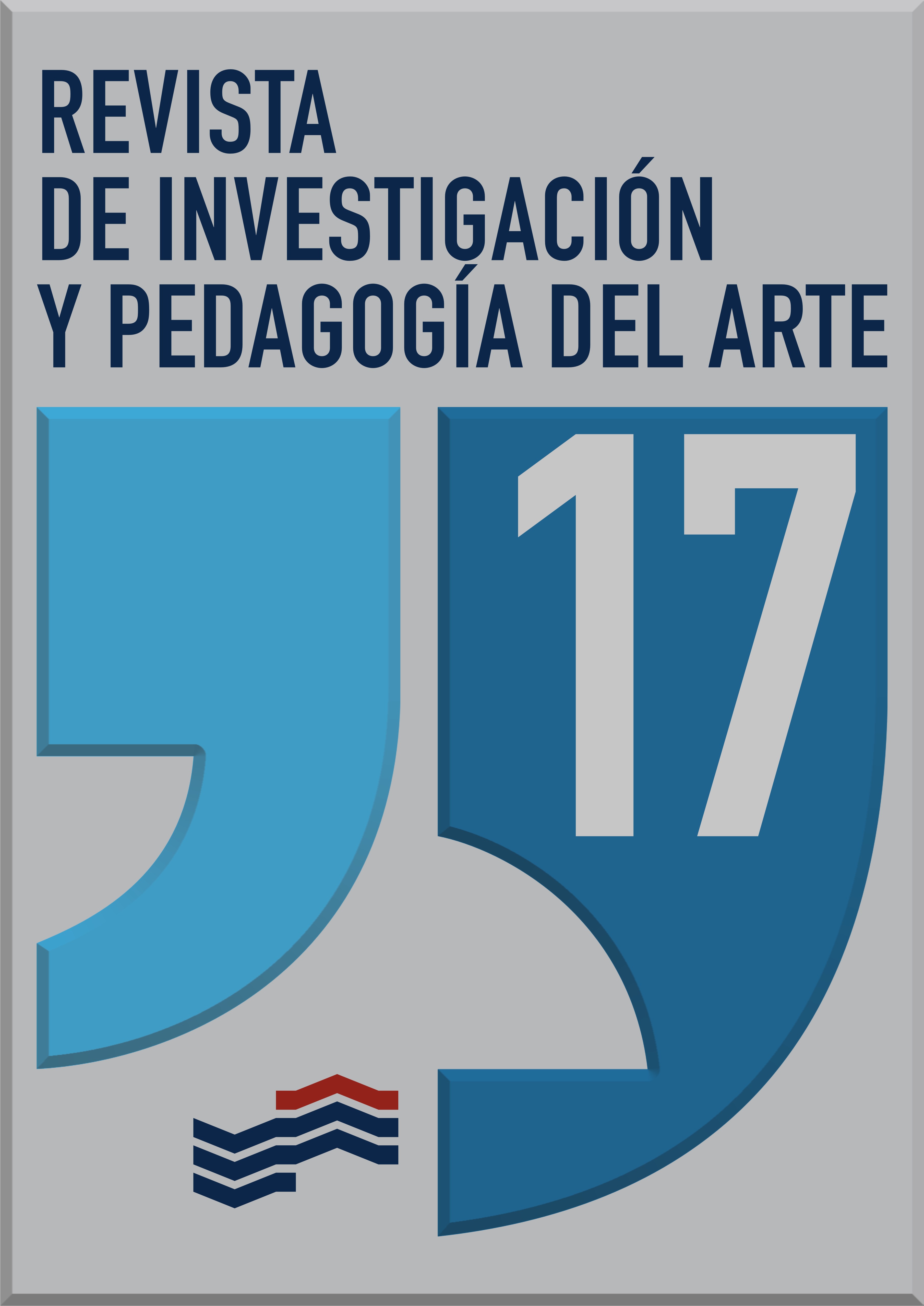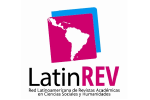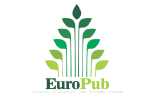Artistic fact and research-creation: guidelines for a methodology in visual arts
DOI:
https://doi.org/10.18537/ripa.17.04Keywords:
research-creation, artistic fac, methodology, interdisciplinarity, visual artAbstract
The article addresses the artistic fact as a multifaceted process that involves creation, experimentation and expression within the scope of research-creation. The problem identified is the need to articulate a methodology, from the artistic practice, that influences the development of new knowledge and forms of expression from the artistic fact. The objective of the study is to propose a methodology for the artistic fact that combines theoretical reflection with practical experimentation and that allows a better understanding of its impact on artistic creation by exploring new ideas and developing critical thinking. Various research methods are used, such as analysis-synthesis, historical-logical, holistic-dialectical, hermeneutic, documentary analysis and participant observation in artistic activities. Through them, the different stages of the creative process are identified, from the conception of the idea to its materialization in a final work of art. The article demonstrates the importance of experimentation and expression in the creative process, as well as the influence of factors such as the socio-cultural context and the artist’s personal experiences in the generation of new forms of artistic knowledge. It is concluded that the artistic fact is a complex and dynamic process that requires an interdisciplinary methodology for its study and understanding in the context of research-creation.
Downloads
References
Abbagnano, N. (1972): Diccionario de filosofía. La Habana: Instituto Cubano del Libro.
Abramović, M. (2016): Walk Through Walls: A Memoir. Toronto: Crown Archetype.
Acaso, M. (2010): La educación artística no son manualidades. Nuevas prácticas en la enseñanza de las artes y la cultura visual. Madrid: Catarata.
Acha, J. (1994): Las actividades básicas de las artes plásticas. México: Coyoacán, 2016.
Álvarez, L. y Barreto, G. (2010): El arte de investigar el arte. Santiago de Cuba: Oriente.
Arnheim, R. (1954): Arte y percepción visual. Psicología del ojo creador. Madrid: Alianza Forma, 2020.
Arnheim, R. (1969): El pensamiento visual. Barcelona: Paidós Estética, 2016.
Barthes, R. (1953): El grado cero de la escritura. México: Siglo XXI Editores, 1997.
Barthes, R. (1961): El mensaje fotográfico. En Un mensaje sin código: Ensayos completos de Roland Barthes en Communications (p. 7-20). Buenos Aires: Ediciones Godot, 2017.
Barthes, R. (1967): El sistema de la moda y otros escritos. Barcelona: Paidós, 2022.
Barthes, R. (1980): La cámara lúcida. Nota sobre la fotografía. Barcelona: Paidós Comunicación, 2020.
Barthes, R. (1985): La aventura semiológica. Barcelona: Paidós, 2021.
Baudrillard, J. (1968): El sistema de los objetos. México: Siglo XXI Editores, 2010.
Baudrillard, J. (1978): Cultura y simulacro. Barcelona: Kairós, 2005.
Beltrán, F. (1970): Desde el diseño. La Habana: Instituto Cubano del Libro.
Benjamin, W. (1936): La obra de arte en la época de su reproductibilidad técnica. México: Ítaca, 2003.
Berger, J. (1972): Modos de ver. Barcelona: Gustavo Gili, 2016.
Bois, Y-A. (2019): Matisse and Picasso. Paris: Flammarion.
Bourriaud, N. (1998): Relational Aesthetics. Dijon: Les Presse du Reel, 2002.
Chun, W. (2016): Updating to Remain the Same: Habitual New Media. Cambridge: MIT Press.
Clark, T.J. (2013): Picasso and Truth: From Cubism to Guernica. New Jersey: Princeton University Press.
Cordovés, Y. I. (2015): Metodología para el dibujo a mano alzada. Revista Atlante: Cuadernos de Educación y Desarrollo, 4. https://www.eumed.net/rev/atlante/ 04/dibujo.html
Danto, A. C. (1991): La transfiguración del lugar común. Barcelona: Paidós, 2002.
Danto, A. C. (1999): Después del fin del arte. El arte contemporáneo y el linde de la historia. Barcelona: Paidós.
Daza, S. L. (2009): Investigación-Creación: un acercamiento a la investigación en las artes. Horizonte Pedagógico, 11(1), 87-92.
De Saussure, F. (1916): Curso de Lingüística General. Buenos Aires: Losada, 1955.
Debord, G. (1967): La sociedad del espectáculo. Valencia: Pre-Textos, 2005.
Derrida, J. (1967): La escritura y la diferencia. Barcelona: Anthropos, 1989.
Dewey, J. (2008): El arte como experiencia. Barcelona: Paidós.
Dondis, D. A. (1973): La sintaxis de la imagen. Introducción al alfabeto visual. Barcelona: Gustavo Gili, 2017.
Dorfles, G. (1974): Las oscilaciones del gusto. Barcelona: Aires: Lumen.
Eco, U (1965): Apocalípticos e integrados. Barcelona: Lumen, 1984.
Eco, U. (1968): La estructura ausente. Barcelona: Lumen, 1986.
Eco, U. (1976): Tratado de semiótica general. Barcelona: Lumen, 2000.
Eco, U. (1984a): Obra abierta. Barcelona: Editorial Planeta/De Agostini.
Eco, U. (1984b): Semiótica y filosofía del lenguaje. Barcelona: Lumen.
Emin, T. (2005): Strangeland. London: Hodder & Stoughton, 2016.
Ferrater, J. (1964): Diccionario de Filosofía (5ª ed.). Edición. Zamora: Montecasino.
Foster, H. (2015): Bad New Days: Art, Criticism, Emergency. London: Verso Books.
Foucault, M. (1995): ¿Qué es la crítica? México: Siglo XXI Editores, 2018.
García Sipido, A. (2003): Saber ver, una cuestión de aprendizaje. La educación visual a debate. Arte, individuo y sociedad, 15, 61-72.
Gombrich, E. (1950): Historia del arte (16ª ed.). London: Phaidon Press Limited/Marcial Pons, 2013.
Gombrich, E. H. (1960): Arte e ilusión. Estudio sobre la psicología de la representación pictórica. Madrid: Debate, 2020.
Gombrich, E. (1968): Meditaciones sobre un caballo de juguete. Barcelona: Seix Barral.
Gombrich, E. (1999): Los usos de las imágenes. Madrid: Debate, 2003.
Gombrich, E. (2004): La historia social del arte. En: Gombrich esencial (p. 369-379). Madrid: Debate.
González Intriago, J. L. (2023): Mural con mosaico de vidrio para la Facultad de Ciencias Sociales y Humanísticas de la Universidad de Ciencias Pedagógicas Enrique José Varona [Hecho artístico, Universidad de Ciencias Pedagógicas Enrique José Varona].
Hegel, G. W. F. (1807): La fenomenología del espíritu. Madrid: Abada Editores, 2019.
Kepes, G. (1944): El lenguaje de la visión. Buenos Aires: Infinito, 1976.
Krauss, R. (2011a): Perpetual Inventory. Cambridge: MIT Press, 2013.
Krauss, R. (2011b): Under Blue Cup. Cambridge: MIT Press, 2024.
Kusama, Y. (2011): Infinity Net: The Autobiography of Yayoi Kusama. Chicago: University of Chicago Press.
Larroque, L. (1979): Abordar la fiesta como hecho cultural, popular y nacional. El País, cultura, 23 de junio; https://elpais.com/diario/1979/06/23/cultura/298936804_850215.html
Manovich, L. (2001): The Language of New Media. Cambridge: MIT Press.
McLuhan, M. (1967): El medio es el mensaje.: un inventario de efectos. Barcelona: Paidós, 2020.
Moya Méndez, M. (2019): Contribución teórico-metodológica a la praxis de la investigación-creación en las artes. Islas, 61 (192), 93-109; http://islas.uclv.edu.cu/index.php/islas/article/ view/ 1155
Moya Méndez, M. (2021): La investigación-creación en arte y diseño: teoría, metodología, escritura. Santa Clara: Editorial Feijóo.
Moya Méndez, M. (2024): Formas de la experiencia estética en artes visuales como teorización en torno a un proceso referencial de investigación-creación. Islas, 66 (209), 1-14; https://islas.uclv.edu.cu/index.php/islas/article/view/1444
Mukařowský, J. (2011): Función, norma y valor estético como hechos sociales. Buenos Aires: El Cuenco de Plata.
Real Academia Española (2021): Diccionario de la Lengua Española (23ra ed.). Madrid: Espasa Libros.
Rodríguez Aguilar, J. L. (2022): Vamos a hacer una tesis. Reflexiones necesarias sobre cómo enfrentar el ejercicio final de grado en artes visuales. Santa Clara: Samuel Feijóo.
Rodríguez Aguilar, J. L. (2024): Los antecedentes y referentes dentro del contexto de las investigaciones basadas en la práctica de las artes. Islas, 66(207): e1400.
Rojas, M. y Díaz, S. (2019): El hecho artístico musical y su carácter multidimensional. Pensamiento, palabra y obra, 21, enero-junio.
Sontag, S. (1973): Sobre la fotografía. México: Alfaguara, 2006.
Steyerl, H. (2017): Duty Free Art: Art in the Age of Planetary Civil War. London: Verso Book.
Vygotsky, L. S (1960): Psicología del arte. Barcelona: Paidós, 2006.
Walker, K. (2022): The Ecstasy of St. Kara. Cleveland: The Cleveland Museum of Art.
Weiwei, A. (2018): 1000 Voices. Toronto: Crown, 2021.
Zabala, H. (2013): Marcel Duchamp y los restos del ready-made. Buenos Aires: Infinito.
Published
Issue
Section
License

This work is licensed under a Creative Commons Attribution-NonCommercial-ShareAlike 4.0 International License.










